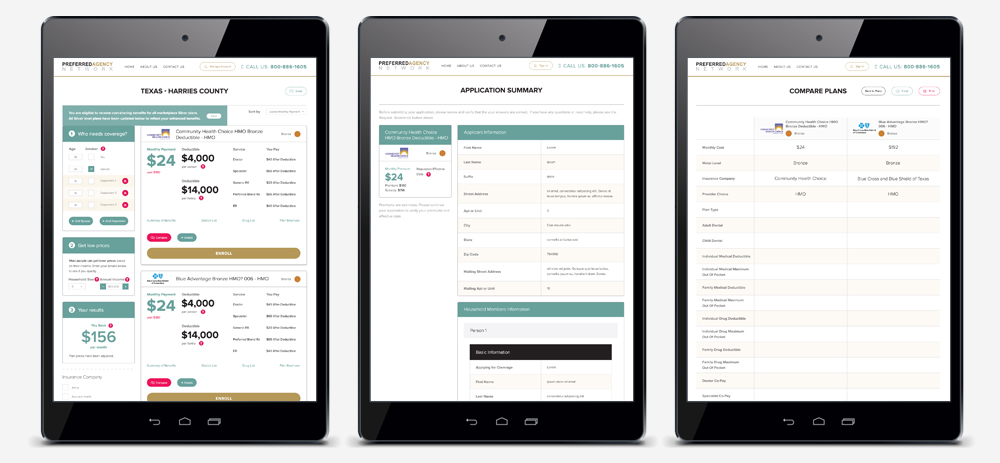Technology plays an essential role in all of our businesses today. More importantly, the size of that role will only increase in the coming years, and the companies that emerge as industry leaders will undoubtedly have strong digital strategies in place. So, with that in mind, we thought it would be beneficial to our audience to publish a series of blogs about the basic value proposition of custom software development and how it contributes to companies’ digital strategies and, ultimately, the bottom line. We will be focusing on the three core tenets of custom apps, from which we approach every software development engagement:
- Increasing revenue
- Reducing costs
- Mitigating risks
This first blog focuses on the first tenet – how custom applications can significantly increase your sales. In this case, there are two types of software applications to consider:
- Those that are developed for direct customer engagement with the goal of increasing sales conversions (customer apps)
- Those that are developed for internal use with the goal of increasing revenue generation and production capacities (operations apps).
Both of these technology groups are essential to an organization’s scalability and growth, and their importance will only increase with time. If you haven’t given them much thought from a strategic perspective, you’ll probably enjoy reading this blog and find it a valuable investment of your time (woohoo!). Let’s dive in!
Customer App Development
Customer applications include company websites, online customer portals, and mobile apps. In line with the statements above, every day customers are demanding more of online access to both information and relevant functionality (and on the device of their choosing). Like any software application, a website can vary greatly in its scope of functionality and the size of the role it plays in a business. Many businesses develop websites without functionality and simply employ them as the digital face of the company brand – a first stop for would-be prospects to gather relevant information and resources on their way to becoming future customers.
For some of those businesses, particularly within B2B industries, a no-functionality website is sufficient and appropriate for the brand. But many companies today who operate no-functionality websites are really missing out on important tools to engage with potential prospects and move them through the sales funnel. The best and also most complete example of this kind of functionality is an ecommerce website. On an ecommerce site, visitors seeking a particular product or service are able to learn about a company, evaluate its product or service offerings, and then move forward with a purchase, all from the website at their convenience.
“A recent survey indicated that 80% of the online population has purchased something using the internet, and 50% of the online population have purchased more than once.”
Online purchases continue to grow in popularity. In fact, a recent survey indicated that 80% of the online population has purchased something using the internet, and 50% of the online population have purchased more than once. However, according to the Small Business Association (SBA), only 28% of US small businesses are selling their products online. Outside of developing complete ecommerce workflows, you can take advantage of a number of sales-related applications, including:
- Online appointment setting
- Customized sales quoting – including insurance policy quotes, custom proposal generation, etc.
- Customer log-in/account portals – which can provide customers with access to a variety of self-service activities and information relevant to their accounts.
In addition to web development, right now there is an exploding trend in customer-facing mobile applications, particularly for businesses wanting to engage their customer base and increase loyalty. Mobile apps are uniquely suited for this purpose because they offer a targeted direct marketing channel to the company’s highest-probability buyers (existing customers), from which the company can launch a number of campaigns, including:
- Customer rewards programs
- Special deal promotions
- High-value sales activities (such as scheduling appointments)
- Customer account management/self-service
- Mobile commerce
Mobile marketing has been demonstrated to be significantly more effective than any other channel, due to the high personal engagement on mobile devices and geo-location targeting capabilities. If you’re curious about the potential of mobile from a marketing perspective, I encourage you to read our recent blog on mobile marketing in 2015 to better understand mobile capabilities and current trends.
So, giving your potential customers the ability to become paying customers or engage in activities that will advance them further into your sales cycle (such as setting appointments), will substantially increase your sales conversions and sales revenue. Likewise, giving existing customers the tools they need to stay engaged with your products & services and offering them the ability to make additional purchases online, will significantly increase customer loyalty and sales revenue. Furthermore, by enabling sales-related activities online, you can then expand your marketing campaigns to include digital platforms with real conversion opportunities and then optimize your digital marketing efforts with data-driven performance metrics and ROI calculations.
Operations App Development
Software applications that improve a company’s sales and fulfillment operations are often overlooked when it comes to revenue-growth strategies; but it’s important to consider operations capacity and effectiveness as a factor that contributes substantially to your revenue generation. To illustrate, let’s consider Company A with a fixed number of salespersons and Company B with sales and fulfillment infrastructure that supports a maximum number of transactions.
Company A will benefit from investments that increase the effectiveness of each salesperson. Examples include:
- Better sales presentation tools – For example, a tablet application for customer presentations and quotes that increases the close rate.
- Better customer relationship management (CRM) tools – For example, CRM integration and customization that increases the amount of data each salesperson can effectively manage or increases the close rate per account.
- Better marketing tools that improve lead generation or lead quality.
According to CSO Insights, companies with mature lead generation and management practices have a 9.3% higher sales quote achievement rate. An increase in sales effectiveness will have a directly proportional increase in the revenue numbers of Company A.
For Company B, the benefit will come from investments that increase sales and fulfillment capacities. Examples include:
- Tools that improve supply chain management – Barcode and mobile application scanning technology.
- Production/project management – A web application for fulfillment employees that organizes new orders/projects and tracks the fulfillment process according to internal processes.
- Financial management – Automation of customer invoices and billing.
- Ecommerce sales infrastructure performance – Performance testing and tuning a website to increase the number of concurrent customer users and transaction requests it can handle, or increasing its speed to reduce performance-related sales losses.
Although infrastructure and capacity improvements do not directly contribute to sales increases, they play a crucial supporting role in revenue generation and should be considered an essential part of your sales strategy.
The greatest advantage of custom software development will always be its tight integration with your unique business goals, processes, customers, and employees. We hope this has shed some light on a few of the ways that custom software can increase your sales. For more examples of custom software development services, check out our Houston software development services page or our portfolio of software development engagements. If you have a question or comment, drop us a quick note below, or get in touch with us. And if you found this post valuable, we’d love if you shared it with a friend!






Leave A Comment